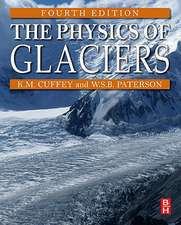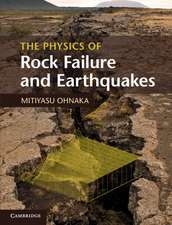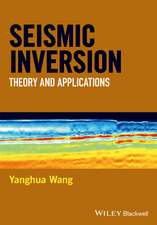Earthquake Science and Seismic Risk Reduction: NATO Science Series: IV:, cartea 32
Editat de F. Mulargia, R.J. Gelleren Limba Engleză Mixed media product – 30 noi 2003
Din seria NATO Science Series: IV:
- 18%
 Preț: 1225.94 lei
Preț: 1225.94 lei - 15%
 Preț: 640.06 lei
Preț: 640.06 lei - 18%
 Preț: 953.65 lei
Preț: 953.65 lei - 18%
 Preț: 950.84 lei
Preț: 950.84 lei - 18%
 Preț: 950.96 lei
Preț: 950.96 lei - 18%
 Preț: 948.61 lei
Preț: 948.61 lei - 18%
 Preț: 945.92 lei
Preț: 945.92 lei - 15%
 Preț: 644.63 lei
Preț: 644.63 lei - 18%
 Preț: 945.92 lei
Preț: 945.92 lei -
 Preț: 402.56 lei
Preț: 402.56 lei - 18%
 Preț: 1229.91 lei
Preț: 1229.91 lei - 15%
 Preț: 646.43 lei
Preț: 646.43 lei - 15%
 Preț: 647.08 lei
Preț: 647.08 lei -
 Preț: 394.51 lei
Preț: 394.51 lei - 18%
 Preț: 1230.21 lei
Preț: 1230.21 lei - 15%
 Preț: 657.57 lei
Preț: 657.57 lei - 18%
 Preț: 1835.83 lei
Preț: 1835.83 lei - 18%
 Preț: 1825.12 lei
Preț: 1825.12 lei - 18%
 Preț: 958.73 lei
Preț: 958.73 lei - 18%
 Preț: 951.29 lei
Preț: 951.29 lei - 18%
 Preț: 944.51 lei
Preț: 944.51 lei - 18%
 Preț: 1015.55 lei
Preț: 1015.55 lei - 15%
 Preț: 647.08 lei
Preț: 647.08 lei - 18%
 Preț: 1827.80 lei
Preț: 1827.80 lei - 18%
 Preț: 1835.53 lei
Preț: 1835.53 lei - 18%
 Preț: 944.99 lei
Preț: 944.99 lei
Preț: 395.63 lei
Nou
Puncte Express: 593
Preț estimativ în valută:
75.70€ • 79.25$ • 62.64£
75.70€ • 79.25$ • 62.64£
Carte tipărită la comandă
Livrare economică 07-21 aprilie
Preluare comenzi: 021 569.72.76
Specificații
ISBN-13: 9781402017780
ISBN-10: 1402017782
Pagini: 364
Ilustrații: XVIII, 338 p. With CD-ROM.
Dimensiuni: 160 x 240 x 19 mm
Greutate: 0.59 kg
Editura: SPRINGER NETHERLANDS
Colecția Springer
Seria NATO Science Series: IV:
Locul publicării:Dordrecht, Netherlands
ISBN-10: 1402017782
Pagini: 364
Ilustrații: XVIII, 338 p. With CD-ROM.
Dimensiuni: 160 x 240 x 19 mm
Greutate: 0.59 kg
Editura: SPRINGER NETHERLANDS
Colecția Springer
Seria NATO Science Series: IV:
Locul publicării:Dordrecht, Netherlands
Public țintă
Professional/practitionerCuprins
1 Modeling earthquakes.- 1.1 Phenomenology.- 1.3 Model building.- 1.4 Prediction.- 1.5 References.- 2 The classical view of earthquakes.- 2.1 A geologist’s view of earthquakes.- 2.2 Seismology and geodesy.- 2.3 Scaling laws for earthquakes.- 2.4 The elastic rebound model and its successors.- 2.5 Nucleation or not?.- 2.6 What is an earthquake? Fracture, slip or both?.- 2.7 Stress: the basic yet unknown quantity.- 2.8 Earthquake energy balance.- 2.9 References.- 3 The Physics of complex systems: appHcations to earthquake.- 3.1 Phase transitions, criticality, and self-similarity.- 3.2 Scale invariance: the analytical approach.- 3.3 Scale invariance: the geometrical approach.- 3.4 Characterizing scale-invariant systems.- 3.5 Modeling scale invariant systems.- 3.6 The origin of power laws and fractality.- 3.7 Problems in applying CA models to earthquakes.- 3.8 Dynamical implications.- 3.9 Statistical implications.- 3.10 Implications for predictability.- 3.11 References.- 4 Time-independenthazard.- 4.1 Seismic Hazard assessment and site effects evaluation at regional scale.- 4.2 USGS and partners: approaches to estimating earthquake probabilities.- 4.3 References.- 5 Time-dependent hazard estimates and forecasts, and their uncertainties.- 5.1 USGS and partners: research on earthquake probabilities.- 5.2 Probabilistic forecasting of seismicity.- 5.3 What is the chance of an earthquake?.- 5.4 References.- 6 Gathering new data.- 6.1 Space geodesy.- 6.2 Paleoseismic data.- 6.3 References.- 7 Seismic risk mitigation.- 7.1 Greek case study.- 7.2 Istanbul case study.- 7.3 References.- 8 Earthquake prediction and public policy.- 8.1 Introduction.- 8.2 Views of social scientists.- 8.3 U.S. earthquake prediction program.- 8.4 Japan’s earthquake prediction program.- 8.5 Pubhc reactions to predictions.- 8.6 Discussion and conclusion.- 8.7 References.- Acknowledgments.- Addresses of principal contributors.
Recenzii
From the reviews of the first edition:
"This is a comprehensive and up-to-date book mainly on earthquake prediction, in the practical sense of including policy issues as well as in the sense that ‘once we can predict something, we understand it’. … This book should be read by everybody interested in earthquake prediction and seismic hazard mitigation, expert or not, scientist or administrator. It … makes a good reference. Each chapter contains a comprehensive set of references to recent literature. A CD-ROM with color figures is included." (Christian Goltz, Surveys in Geophysics, Vol. 27, 2006)
"This is a comprehensive and up-to-date book mainly on earthquake prediction, in the practical sense of including policy issues as well as in the sense that ‘once we can predict something, we understand it’. … This book should be read by everybody interested in earthquake prediction and seismic hazard mitigation, expert or not, scientist or administrator. It … makes a good reference. Each chapter contains a comprehensive set of references to recent literature. A CD-ROM with color figures is included." (Christian Goltz, Surveys in Geophysics, Vol. 27, 2006)
Caracteristici
Includes supplementary material: sn.pub/extras











